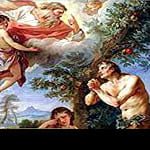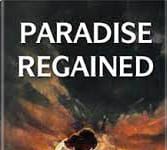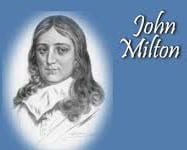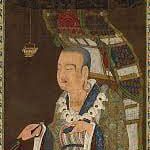Kasiprasad Gose To a Dead Crow | A Critical Analysis
Kasiprasad Gose To a Dead Crow | A Critical Analysis
‘To a Dead Crow’ by Kasiprasad Gosh is a poem written on the theme of love and death. The poem is elegiac as well as pathetic and at the same time meditative. Like other poems of the poet, this piece of poetry is also written in simple diction. The poem consists of four stanzas and each stanza bears independent thought and feeling pertaining to a dead crow.
In the first stanza, the poet says about the crow when it was alive. The poet addresses the crow as ‘Gay minstrel of the Indian clime’ which means a cheerful singing bird of India and says that while it was living, it came out from its nest every morning and song ‘caw, caw’ in numbers which vexed the mind of the poet and awoke him from sleep. The poet hated the sound of the crow and to avoid the sound of crow he walked out into his garden where there was a tank on a spacious piece of land. Besides the tank, there bloomed various kinds of flowers as lilies, jasmine, roses etc. In the garden, there were many trees and thick foliage of trees. Amid the foliage of the trees, the crow built its nest. There, the crow took rest after daily labour. But suddenly, one day the crow died.
In the second stanza, the poet says about what the crow did during the days it was living. The poet, noticing the dead crow, goes back to his past, while it was living, it took the offal of the poet’s meal. It took food from the rubbish but now it is no more. It is still and its eyes are shut forever. Its beak is not now active to seek food from carcasses, or it is no more to catch the mice from the poet’s home. It is dead and it will never come to stray and bask in the sunlight.
The poet’s thoughts and feelings, rounding the dead crow, run on, and in the third stanza, he says if death did not come to the crow! But death had taken the soul of the crow with its destructive sharpened dart. The death pierced his dart to the heart of the crow. Though life is no more in the crow yet the poet feels that the crow is still warm. The eyes of the crow are so open that it seems to be alive. Now the crow is dead and death no more can mar the form and features of the crow. Still, now its former ugliness is in it.
In the fourth but last stanza, the poet meditates and anticipates his own death. When death will come to the poet his eyes must shut and his soul will be exempted from earthly bondage and would fly to heaven and meet eternity. And then, the poet’s body will remain on the earth’s cold lap. Then the poet would not be able to compose a verse to please the public ears. Here the poet thinks that while the crow was living, the poet thought its voice to be harsh, and unlucky and so he hated the voice of the crow. But while the crow dies, the poet thinks that its voice had poured the voice of joy and delight. So would happen to the verses of the poet. At last, the poet thinks if he meets death at this moment then it will be his last poem.
From the above analysis of the poem, it is seen that this poem is a nature poem with a note of mysticism. The poet’s kind feeling toward the dead crow, a wild bird, is really a silly matter, but poetically it is very significant as the poet succeeds to arouse his readers’ sympathy towards the dead crow.
Its language is straightforward. The second stanza is rich in visual imagery. 0 0 0
Kasiprasad Gose To a Dead Crow
Read More: The Poetry of Henry Derozio-Chief Features
N. B. This article entitled ‘Kasiprasad Gose’s Poem ‘ To a Dead Crow’ – A Critical Analysis’ originally belongs to the book ‘Indian English Poetry Criticism‘ by Menonim Menonimus. Kasiprasad Gose To a Dead Crow
Books of Literary Criticism by M. Menonimus:
- World Short Story Criticism
- World Poetry Criticism
- World Drama Criticism
- World Novel Criticism
- World Essay Criticism
- Indian English Poetry Criticism
- Indian English Poets and Poetry Chief Features
- Emily Dickinson’s Poetry-A Thematic Study
- Walt Whitman’s Poetry-A Thematic Study
- Critical Essays on English Poetry
- Tawfiq al-Hakim’s Novel: Return of the Spirit-An Analytical Study
- Tawfiq al-Hakim’s Novel: ‘Yawmiyyat Naib Fil Arayaf’-An Analytical Study
- Analytical Studies of Some Arabic Short Stories
- A Brief History of Arabic Literature: Pre-Islamic Period …
Books of Composition by M. Menonimus:
- Advertisement Writing
- Amplification Writing
- Note Making
- Paragraph Writing
- Notice Writing
- Passage Comprehension
- The Art of Poster Writing
- The Art of Letter Writing
- Report Writing
- Story Writing
- Substance Writing
- School Essays Part-I
- School Essays Part-II
- School English Grammar Part-I
- School English Grammar Part-II..
Related Searches:
- The Individual and Society-Guide Book
- The Individual and Society-DU Notes
- The Golden Treasury of Indo-Anglian Poetry
- The Harp of India-Henry Derozio
- ‘To the Moon’-Henry Derozio
- Night of Slaughter Duryodhan’s Death
- Ramesh Chunder Dutt’s Poem ‘Sita Lost’
- The Wizard Knight’
- ‘King Porus A Legend of Old’
- The Shair A Poem
- To a Dead Crow











